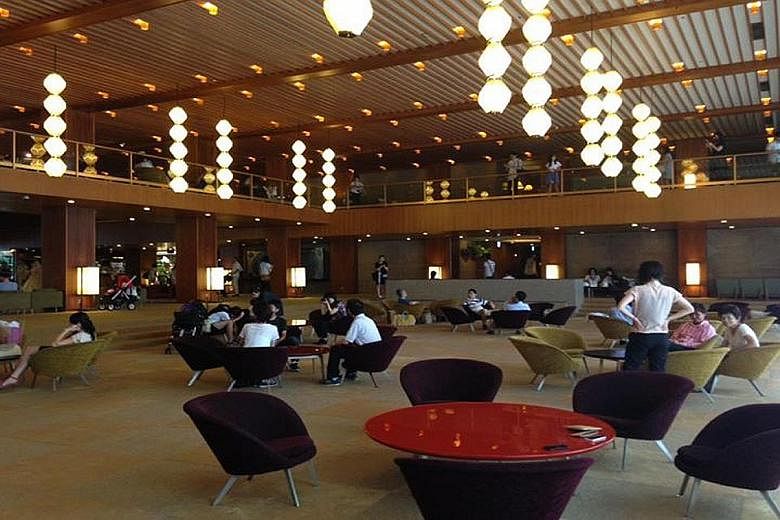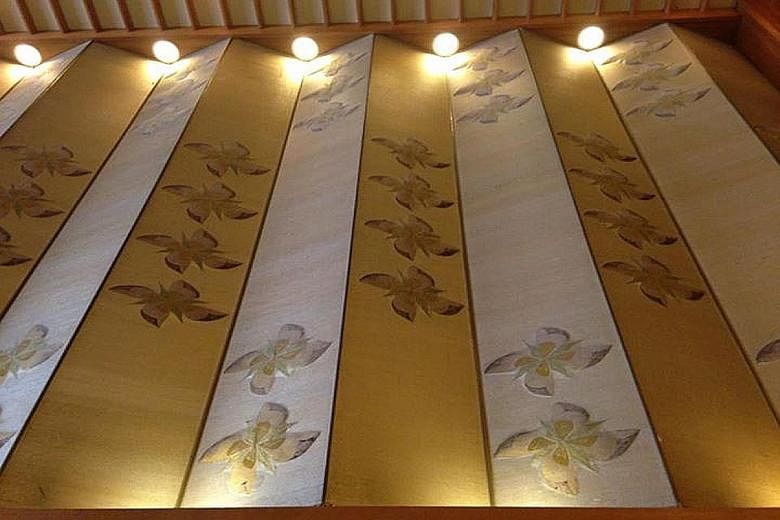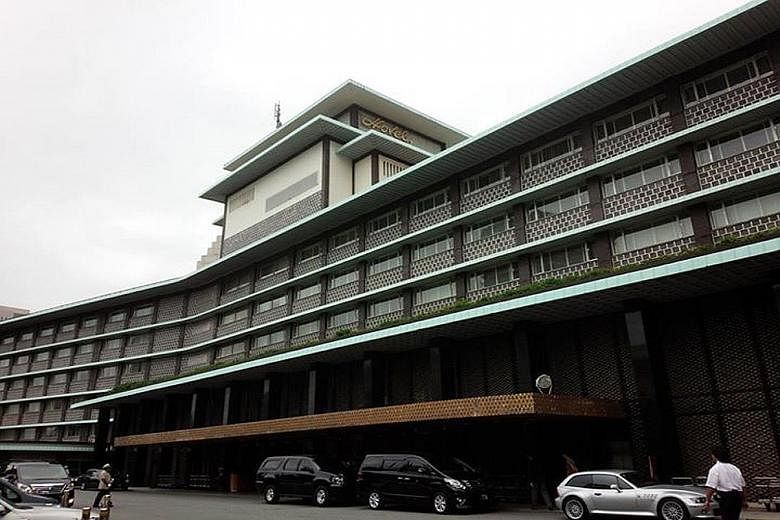TOKYO • Tokyo's iconic nod to Japanese Modernism, the Hotel Okura, will bid farewell to its last guests next week and face the wrecking ball, despite petitions from around the world to save it.
The 1960s-era hotel, which has welcomed international dignitaries and inspired a throng of admirers eager for preservation, will close its doors on Monday to make way for a gleaming new hotel rebuilt in time for the 2020 Olympics, at a cost of about 100 billion yen (S$1.17 billion).
Mr Tyler Brule, editor-in-chief of Monocle magazine, who spearheaded a campaign that included a petition with almost 9,000 signatures, said in an e-mail response to questions: "What's odd about the Okura is that it's a perfect embodiment of 1960s Modernism and it represents that very first wave of new development in the region. For this reason alone, it deserves to be preserved."
The petition generated enormous press and focused a spotlight on architectural preservation, "or lack thereof", he said.
Monocle printed linen-bound books and presented them to every Okura board member to encourage reconsideration of the hotel's destruction, he added.
Since it opened in 1962 across from the United States Embassy, on the grounds of a former feudal estate, the Okura has welcomed American presidents such as Richard Nixon and Barack Obama and was featured in the James Bond novel You Only Live Twice.
News of its demolition spurred Facebook pages and an Instagram hashtag by Tomas Maier, creative director of Bottega Veneta, to save a building that evoked the elegance of an era in a nation accustomed to tearing down and rebuilding.
Mr Andrew Lindsay, 44, is one such devotee. On a trip to Tokyo in June, the Seoul-based Deutsche Bank executive spent a day taking pictures of the hotel.
"It had this perfect mid-century Modernist architecture with a Japanese feel to it," said Mr Lindsay, chief operating officer of Korea at the bank, who first stayed at the Okura on a business trip in 2002. The New Zealander has visited Tokyo twice in the past year and posted the photos on a "Save the Okura" Facebook page.
Fans are mostly lamenting the loss of the Okura's public spaces: the wide-open lobby with its hushed tones, signature pendant lights, lotus-flower table-and-chair arrangements, and a map of the world with lit-up timezones, as well as the hotel's watering hole, the Orchid Bar.
Monocle's Mr Brule said: "The elegance of the lobby, the shopping boulevard on the lower level, the coat check woman and newsstand attendant in kimono, the smoky, lovely Orchid Bar. All of the public areas are superb."
Tokyo is racing to add more accommodation ahead of the 2020 Olympic Games. Aided by a weaker yen, visitors reached a record 11 million this year ended July, 47 per cent more than a year earlier, according to the Japan National Tourism Organisation.
The current 11-storey Okura opened in time for Tokyo's first Summer Olympics in 1964. The new 41-storey hotel is slated for completion in 2019, before Tokyo stages its second summer games.
Okura's largest shareholders are Japan's biggest contractor Taisei Corp and biggest developer Mitsubishi Estate.
Mr Yoshio Taniguchi, son of Mr Yoshiro Taniguchi, designer of the original Okura, is part of a group designing the new hotel, which will feature a tea ceremony room and a Japanese garden, like the current one. The new structure will increase the number of rooms to 510, from 408 in the main building now.
Wear and tear made it increasingly difficult to provide "top-class comfort", Okura spokesman Ryutaro Suzuki said.
The furnishings and interior decor, such as the Okura's signature pendant lights, murals and paper screens, will be assessed as to whether they can be preserved once they are removed, he said.
Tokyo is no stranger to pulling down and rebuilding its structures every few decades.
In the last few years, Palace Hotel Tokyo and Capitol Hotel Tokyu were among those from the 1960s that were demolished and rebuilt as high-rise complexes.
Mr Toshiko Mori, founder and principal of New York-based Toshiko Mori Architect who has been involved in the campaign to save the hotel and is a friend of Bottega Veneta's Maier, said in an interview with Bloomberg Television that buildings from that decade in Japan "fall in the middle of what I call the orphan zone".
"It's not new enough, it's not old enough and there is a lack of focus of looking at this particular era as something which is very significant and that could be important."
Some of the old Okura feel will be kept alive in the South Wing, an annex designed in the same Modernist style that opened in 1973, which will remain for now.
Mr Lindsay, an avid photographer, said he has tried to squeeze in an hour to walk around the Okura's lobby on every trip to Japan.
"The Okura isn't one single thing. It's a sum of individual pieces," he said. "This sort of renewal has been going for years. This is the reality of modern life."
BLOOMBERG




